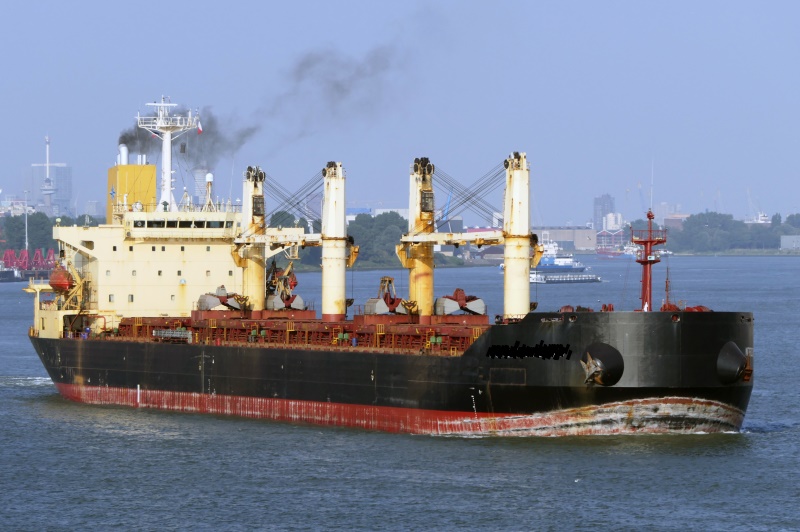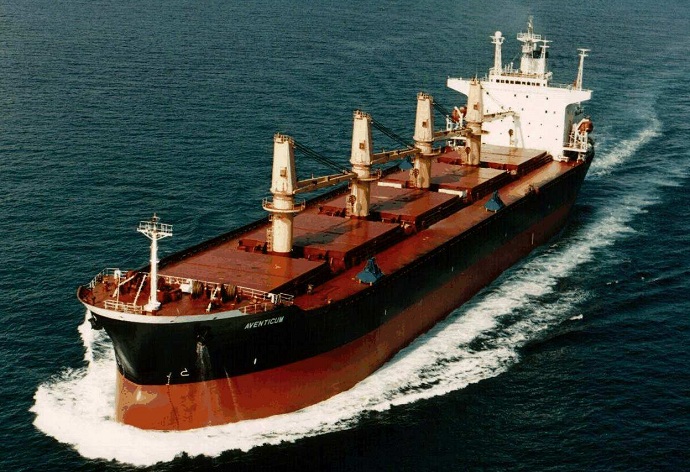|
|
Seagoing Bulk Carriers: Purpose and General Use
There were many dangers involved in operating seagoing bulk carriers. It is crucial to plan carefully and be careful in all shipboard issues. This site is designed to serve as a reference for international shipping communities. It provides details as well as guidance for loading and unloading bulk cargo types. The site must remain within the limitations set by the classification society. It is important to minimize the chance of stressing ship's structures and comply with the safety rules for secure sea passage. Our detail pages cover a variety of topics related to bulk carriers which could be beneficial to people working on board and those working at ashore at the terminal.
General features of seagoing bulk carrier
Bulk carriers can be single-deck vessels. They come with top-side tanks, as well as side tanks for hoppers. They are typically used for cargo spaces. They are built to carry solid bulk cargo. Bulk cargo that is solid refers to any substance other than liquid or gas consisting of larger pieces of material, usually well-composed, and loaded directly into ships' cargo areas. Sugar, grain or ores in bulk are examples of such dry cargo. Bulk carriers are vessel that is primarily used to transport bulky or liquid cargo. This could also encompass tankers. The term bulk carrier is used in normal usage to refer to vessels designed to transport solid bulk cargoes. This includes grain, similar agricultural products, and minerals such as coal, ore, and stone on one or more of the voyage legs. Check out this kamsarmax info for more.

What Is A Bulk Transportation?
"A ship which is intended primarily to carry dry cargo in bulk, including such types as ore carriers and combination carriers"
-Carrying Capacity ranging from 3,000 to 300,000 tonnes
Average speed of 12 15 knots
-Single deck ships, ie no tweendecks
Small to medium-sized bulk carriers with a carrying capacity of up to 40,000 tonnes are equipped with cargo handling gear. Larger vessels have dock-based facilities for loading and unloading.
-Cargo holdings are typically large and free of obstacles. There are bigger hatch dimensions so that cargoes can be loaded/unloaded easily.
A single cargo hold is generally designated as a ballast storage. It can be used to enhance stability on ballast journeys. It's also possible to partially ballast, but it is only permitted for port.
-They can be covered with single pull, hydraulic, or stacking (piggyback) type steel hatch covers
Ballast tanks of different types
Sloping topside wing tanks
Bottom side of wing tanks that are sloping
Double bottom tanks
Ballast for peak and after peak water tank.
Are they bulk cargo that is solid? Any other substance, other than gasoline or liquid, that is composed of a mixture or granules of smaller pieces that are uniform in composition, and loaded directly into cargo spaces. It is essential to ensure that all cargoes are ready for loading, regardless of whether they're "clean" or "dirty", and that there isn't any contamination. Cleaning should be sufficient to allow the cargo to be loaded. This typically, a surveyor is required to determine if the space is suitable for loading. To avoid contamination, it is essential to get rid of any remnants left from previous cargo. Water is the main cause of damage to bulk cargoes. Therefore, it is essential that holds are dry in order to be able to accept cargo. Hatch covers must be watertight to prevent water from entering. Every fitting (ladders or pipe guards as well as bilge covers) inside the container should be inspected. must be inspected to make sure they are in good condition and securely fitted. Such pieces of equipment might cause significant damages to conveyor belt systems and consequent delays, and the ship would be held responsible if they be inadvertently discharged with the cargo. Click over to this bulk carriers specialist for more.

Bulk Carrier and Bulker Bulk Carrier, Bulker A vessel that is able to carry dry cargo. It's not meant to be a liquid bulk tanker or carrier. The traditional bulk carrier has only a single deck and skin. Bulk carriers are designed to load the maximum deadweight for any bulk cargo including heavy ore and lighter grain . The process of loading, carrying and the release of dry bulk cargo is more difficult than people believe.
Gearless Bulk Carrier
Many bulk cargoes have hazardous characteristics, or may alter their properties on passage. Improper loading could result in damage to the ship, e.g. A wrong loading can result in the ship breaking if you load a hold forward at its maximum. This is called stress? can have life threatening results when the weather is rough at sea. Remains of previous cargoes may affect the cargoes that follow. Damage from water can have a devastating effect on some bulk goods e.g. cement power. It is difficult to verify cargoes loaded or discharging. All these factors affect the operational procedures used for the safe transport of bulk cargoes. Discharging bulk cargo using? conveyor belts and similar systems are not monitored and supervised the bulk cargoes make a cone. The angle formed by the cone is known as 'angle of repose'. It is different from cargo to cargo. Iron ore cargoes can form a steep-angled cone while those that move freely form a shallow-angled cone. A cargo with a low angle or repose could shift in the course of. If the cargo is close to its completion, bulldozers could have been used to divide the load across holds. Dry-bulk carriers depend on facilities at the shore for discharge and loading of cargo. However, bulk carriers may be able to self-unload using conveyors beneath the cargo holds or on deck. |
|